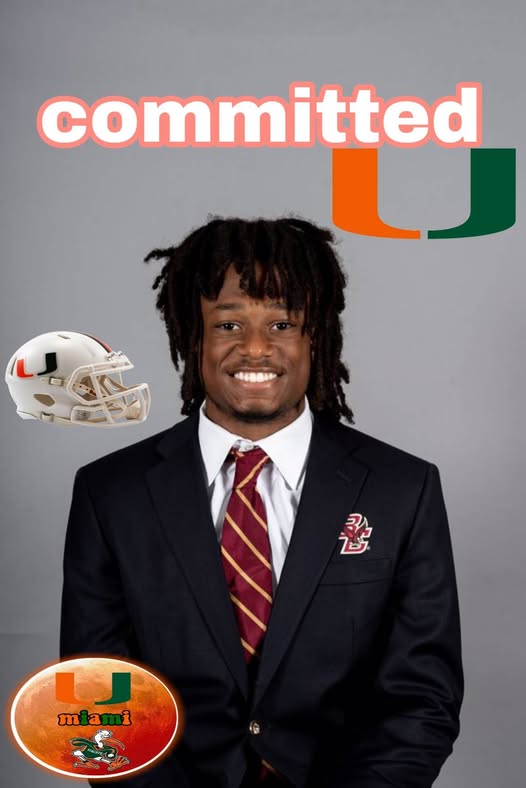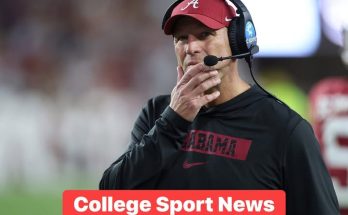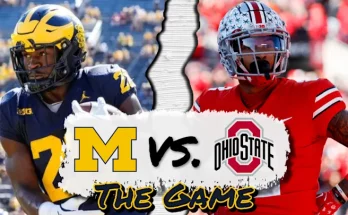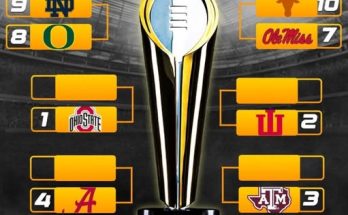In a seismic shift that has sent shockwaves throughout the college basketball world, the No. 1 player in the country has officially announced his commitment to the University of Miami, stunning powerhouse programs like Tennessee, Auburn, Kentucky, and BYU in the process. The announcement, made during a nationally televised segment and livestreamed to tens of thousands of eager fans, has catapulted the Hurricanes into the national spotlight and firmly cemented their status as a rising force in the world of elite collegiate hoops.
The five-star phenom—widely regarded as a once-in-a-generation talent—had kept fans, analysts, and coaches guessing for months as he weighed his options. His final list read like a who’s who of college basketball royalty, featuring Rick Barnes’ battle-tested Tennessee Volunteers, Bruce Pearl’s fast-paced Auburn Tigers, John Calipari’s always-loaded Kentucky Wildcats, and BYU’s sneaky-good program that had built a solid relationship with the star early in the recruiting cycle. Yet in the end, it was Jim Larrañaga and the Miami Hurricanes who won the recruiting war, shocking many and thrilling a fanbase hungry for a return to national dominance.
This commitment marks one of the biggest recruiting coups in the history of Miami basketball. Although the Hurricanes have enjoyed moments of success in recent years—including deep NCAA Tournament runs and a strong presence in the ACC—they have never secured a commitment quite like this. The No. 1 overall prospect doesn’t just bring his talent; he brings national attention, momentum, and a shift in perception that could have long-lasting implications for the program and college basketball as a whole.
For the Hurricanes, this wasn’t a fluke. It was the result of months of behind-the-scenes relationship-building, strategic NIL maneuvering, and a clear vision presented by the coaching staff. According to those close to the recruitment, Miami’s pitch centered not just on basketball success, but on life after college, personal development, and the opportunity to be the cornerstone of something truly transformative.
“He wanted to be the face of a program,” a source close to the family said. “He could’ve gone somewhere with five other McDonald’s All-Americans and shared the spotlight. But at Miami, he saw the chance to build a legacy. To make history.”
The young star—known for his explosive first step, high IQ, and devastating shot-making ability—had taken official visits to all five finalists. His trip to Coral Gables, however, seemed to stand out. Sources say he was blown away by the vibrant culture, the professional environment, and the unique mix of tropical serenity and competitive edge that the Miami campus offers. There was also a genuine connection with Coach Larrañaga, who impressed the family with his longevity, wisdom, and commitment to player development.
In many ways, this commitment represents a paradigm shift in modern recruiting. The traditional powers were all in on this player, and for good reason. Tennessee has been a dominant SEC force and plays a tough, physical brand of basketball that matches his on-court tenacity. Auburn has produced NBA talent and plays with a pace that suits his style. Kentucky is the gold standard of one-and-done excellence, with an NBA pipeline unlike any other. And BYU had quietly made a strong case with its emphasis on faith, family, and community. Yet Miami found a way to outmaneuver them all—not through glitz, but through vision.
What separates the Hurricanes in this new recruiting era is their understanding of the broader picture. NIL (Name, Image, and Likeness) opportunities are no longer a secondary consideration—they’re a central part of a recruit’s decision-making process. Miami, thanks in part to a well-structured NIL collective and strategic partnerships with brands based in South Florida, presented one of the most comprehensive and athlete-centric NIL blueprints available.
Insiders suggest that the player’s deal could be one of the largest NIL arrangements ever given to a college basketball recruit—though precise figures remain undisclosed. But money alone wasn’t the deciding factor, according to his inner circle.
“He could’ve made seven figures anywhere,” said a family friend. “What Miami offered was a total package. Lifestyle, branding, relationships, the chance to play in meaningful games and be the centerpiece. That’s hard to beat.”
The ripple effects of his decision are already being felt across the college basketball landscape. Miami’s recruiting class, previously considered solid but unspectacular, now rockets into the top five nationally. Other elite prospects, some still undecided, are now reportedly eyeing the Hurricanes more closely—drawn in by the chance to play alongside a transcendent talent and be part of what’s shaping up to be a championship-caliber roster.
For Miami fans, the announcement feels like a dream come true. The program has long been searching for a cornerstone player who could elevate them from the tier of “dangerous underdog” to full-fledged national contender. With the addition of the No. 1 player in America, that moment has arrived.
Social media exploded within minutes of the announcement. Former Hurricanes players, NBA stars, analysts, and college hoops fans flooded platforms like X (formerly Twitter) and Instagram with reactions ranging from disbelief to jubilation. Some critics questioned whether the move would pay off in terms of team success, but the consensus was clear: Miami has arrived, and the college basketball hierarchy just got a shake-up.
One former NBA scout compared the new Hurricane commit to a young Jayson Tatum, noting his polished footwork, perimeter scoring, and leadership abilities. “He’s the kind of guy who doesn’t just change games—he changes programs,” the scout said.
Back on campus, Miami students celebrated the announcement with an impromptu gathering outside the Watsco Center, chanting “The U is back!” and lighting up the night with school pride. Local businesses even joined in, offering discounts and promotions in honor of the newest Hurricane hero. It wasn’t just a recruiting win; it was a cultural moment.
As for what comes next, expectations will be sky-high. Anything short of a deep NCAA Tournament run will be seen as a missed opportunity, especially with a roster that is likely to include multiple future NBA players. But those who know the star best say he’s not shying away from that pressure.
“He’s been in the spotlight since he was 14,” said his high school coach. “He thrives on expectations. He’s not afraid to fail because he works too hard to let that happen. He’s going to Miami to win. Period.”
The Hurricanes now find themselves at the center of every preseason discussion. Media attention, national TV games, and top-25 rankings are all but guaranteed. More importantly, this commitment reaffirms what college basketball fans have known for years: in today’s game, the traditional blue bloods aren’t the only ones capable of building dynasties.
Miami has built a foundation brick by brick, blending savvy recruiting with an embrace of modern college athletics. Now, with the addition of the most coveted prospect in the country, that foundation has the makings of a championship fortress.
In a world where loyalty, legacy, and leadership matter as much as highlights and headlines, the No. 1 player in America chose a path that bucks convention. He chose Miami not because it was the safest option, but because it was the boldest. And in doing so, he didn’t just change the direction of a program—he may have changed the face of college basketball altogether.
As the Hurricanes prepare for what promises to be a historic season, one thing is clear: the eyes of the basketball world are now firmly fixed on Coral Gables. And with a generational talent leading the way, Miami isn’t just ready for the moment—they’re ready to redefine it.



